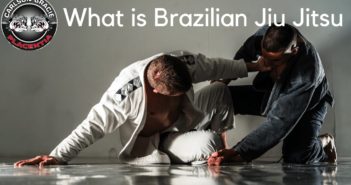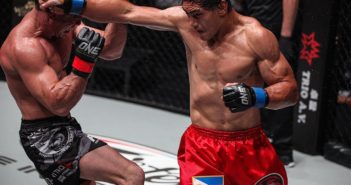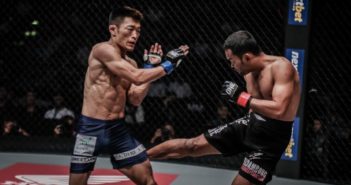by Nick Osipczak
After my last fight for the Ultimate Fighting Championships (UFC) in 2010, I didn’t know whether I was going to fight again, so I was afforded the luxury of easing off the punishing training regimen that having an upcoming fight forces you to endure, and instead I could focus on training purely for the love of it once again. I found myself drawn to Tai Chi and immediately began noticing all the imbalances in my body, and it took about two years to undo most of the significant damage I had caused to myself from years of sparring and pushing myself to the limits in training.
The beauty and depth of the internal arts
Once I’d realized the efficiency, beauty and depth of the internal martial arts, I was 100% committed to its mastery. Having a somewhat obsessive-compulsive personality when it comes to doing what I love, I immediately devoured all the texts and videos on the subject matter and began my travels to learn from various masters around the world. I took three years off from sparring, and instead focused on moving as slowly and smoothly as possible. It was both a beautiful and humbling experience to feel like a complete beginner again, and this helped me realize that, more than anything, it is the learning that I enjoy. I love a challenge, and when I read claims that Tai Chi Ch’uan takes 10 to 20 years to master, my imagination was instantly captured and I knew what my future had in store for me. I had to completely “empty my cup”, detaching from my previous training methods, which is no easy task! As my brain was attempting to rewire itself to learn this new language, most of my old habits were actually in direct contrast to what I needed to be doing in order to evolve further in this new direction. The concept of doing less to achieve more is certainly a tricky one for Westerners to wrap their heads around!
Changing beliefs
And now today, when I try to pass on what I have learned to my friends in the MMA community, I encounter two common scenarios. The first is the confused look as I try to explain a concept which is too alien to their current way of thinking, one that does not harmonize with – indeed, even threatens – their limiting beliefs, or the way they see the “sport” of martial arts. The other is simply an inability or unwillingness to “start over,” to throw away the old to make way for the new, even if they can see the value. People too often feel that they have invested so much energy for so many years that they would be doing themselves a disservice by starting anew. As I see it, our attachments can become our downfalls, and adaptation is the key to longevity and harmony.
After years of study on everything from nutrition to philosophy, anatomy to alternative health systems, as well as the classic texts on war and peace, every aspect of my training has shifted dramatically from what it once was. A significant moment came when I felt I was no longer just following what everyone else was doing, or what my coaches were telling me to do. I was coming from a place where I could draw on my own experience and research – and, more importantly, I was following my intuition.
Over the last three years, my main training partner has been my son Shen, who is now three. Becoming a father forces you to adapt in so many ways, and in order to fit the daily amount of training hours in, one is required to make changes both to lifestyle as well as the type of training. Motivations change too. Now I am inspired to lead by example and I have to be more consistent and thoughtful with my approach. Shen is of the age now where he can spot anomalies and he loves nothing more than to ask, “Why, Dad….?”
Four ounces to move a thousand
Tai Chi Ch’uan talks of using four ounces to move a thousand pounds, so when I wrestle my son, it’s not a case of the strong and experienced versus the weak and unaware. Instead, I make it so I literally use as little effort as I can, and would have to say that he becomes the stronger of the two of us. I constantly play around with his balance, trying to affect it so subtly that he is unable to grasp what is the cause of his instability.
 Taichi principles in training and life
Taichi principles in training and life
From my many years studying ground fighting, I am well-versed in the best offensive and defensive techniques; but I have yet to teach any to Shen. Instead, I just put some weight on him, pinning him to the ground or against something upright, and ask him if he can get out. Then I let him try and wiggle and squirm his way free using movement and the principle of finding space. Sometimes he says he is stuck and I give him a pointer on which part of the body he should move to free himself up. He has become blocked, limiting his own movement through lack of awareness. We all do it, becoming attached to one way of thinking; and when that doesn’t serve us, if our vision has become too narrowed, then we are unable to come up with any new, creative ideas because we are drawing from memory instead of feeling in the present.
A Karate friend of mine recently asked Shen to punch his hand and was surprised that I hadn’t taught him “correct technique” yet. But that will come later, and it will come easily and quickly once he knows how to move correctly and has cultivated a mind which stays open to assimilating new information. Besides, I don’t really want my three year old knowing how to punch just yet!
Shen’s favorite film is The Jungle Book, and there’s nothing more he likes doing than climbing on me. Even my 10-month-old has started joining in, crawling as fast as he can across the room to get in on the action. We mimic animal movement, moving primally across the floor like gorillas, monkeys, snakes, bears…
Aside from our training together, just observing how a baby navigates this world is enlightening for those of us obsessed with movement. From the first few months when you can feel the strength of their grip and how all limb movements originate from the dantien, to when they begin to perform deep squats and exhibit perfect posture. Getting to feel true softness, noticing how their pliant muscles can move freely around the bone, and realizing what is actual full-joint mobility.
It can be an awakening experience knowing that we all once moved like that, and somewhere along the line we picked up some bad habits, and are continually paying the price for it as we age and strive to unlearn, simplify, return to our youthful ways.
When I was a boy, my friends and I would regularly dare each other on, challenging one another, pushing our boundaries in the quest for new experiences and overcoming fears. I find myself continuing that tradition with my son. When we come across some cold water and I ask Shen if he wants to go in, I’m really asking myself if I want to go in. Without him there, I may not always verbalize the idea, which brings it one step closer to reality. Like all good training partners, you find ways of fitting more training into the day and bond through the shared experiences.
I am a believer in the saying, “Do one thing a day that you are scared of.” It is an excellent way to prevent the mind from calcifying. When the mind begins to set, this is a sure way of letting fear creep in, and it only needs one foot in the door. The mind is like a parachute – only useful when open!
When carrying Shen on my shoulders, it forces me to adopt more and more efficient posture. With him constantly growing a little heavier, it reminds me of the old story of Qing-Gong training when one jumps out of a hole every day and each day the hole gets made 1cm deeper.
When he climbs on my arms as I am sitting, my structure is tested and I strive to apply all the principles that Zhan Zhuang practice cultivates – keeping the shoulders down, elbows heavy and spine tall.
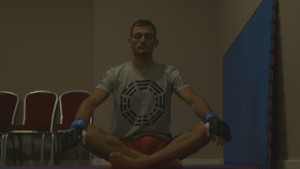
Practicing patience
But most of all my son helps me develop PATIENCE! An integral component to successfully training internal martial arts, it is something we could all have more of – the ability to not get frustrated and to continually adapt to our ever-changing circumstances. Having kids has forced me to reassess how I spend my time each day, and trim off the unnecessary. Time is more precious, and sleep, food and even breathing has to be respected even more due to their significant contributions to my energy levels. When you start your day with breathing exercises in the morning, it forces you to become more aware of your environment, more in the present, and has the ability to make you consider how you will spend the rest of the day a little more carefully. As the saying goes, “The yi leads the qi.”
The chances of the average MMA student today incorporating standing practice into their daily routine? Slim to none, and Slim just left town! The current MMA fighter wants quick results, and there is the prevailing dogma that if they haven’t finished the day exhausted and beat up, then they haven’t trained properly. There is also the irony of being partly motivated to rush through the stages of training in order to hit the “big time” in their twenties, believing that they will be “past it” by their mid-thirties, not realizing that it is this very mindset that will cause the damage to their bodies (and brains) that unfortunately force so many of them into early retirement. With often irreparable knee, spine, and shoulder injuries to name a few, it is a sad situation when professional athletes cannot even nurture their health into their forties.
Maintaining a neutral state
Nowadays, it is a rarity when I feel sore, and I enjoy the process of returning my body to a balanced, neutral state as soon as possible afterwards. This enjoyable process of putting a little wear and tear into the body before healing ourselves can be likened to the tempering of steel, where thousands of oscillations between hard and soft alchemically transcend us to a new way of being. There are no shortcuts for the sword that is destined to become great; it must be willing to endure and persist. It must also love its journey, and believe in its destiny.
Another lesson MMA fighters would do well to learn is to tone down their competitive natures for partner drills, and increase their sensitivity. They are like a fighter-plane locked onto a target with one objective: seek and destroy. This extremely yang approach doesn’t lend itself well to being aware of what the opponent is intending, limiting the amount of information one can garner through touch and even sight. A simple grounding drill where one applies pressure slowly and steadily to their partner becomes a great challenge for the MMA adept, as they are not used to toning down their force and learning to vary it in such small increments.
Future goals
One of my goals is to help spread the internal martial arts into MMA, not just because I believe the current standard of fighting on display is well below where it will be a few years down the line (the sport is still relatively young – the first UFC was in 1993), but I am also highly motivated to spread the health benefits to my fighting brothers and sisters. For this to be achieved, I am regularly reminded of just how much I will need to continue learning from Shifu Shen’s main lesson – the art of patience!
About Nick Osipczak:
Nick Osipczak began Hung Kuen at age 18 and six years later was competing for the world’s largest fighting organization – the UFC. No opponent could finish Nick in any of his 18 career fights. For 5 years he ran a martial arts club in London where at one stage his students amassed a 22–0 record in professional MMA bouts. Now specializing in Tai Chi Ch’uan, Nick passes on his knowledge and experience through seminars and intensive workshops.

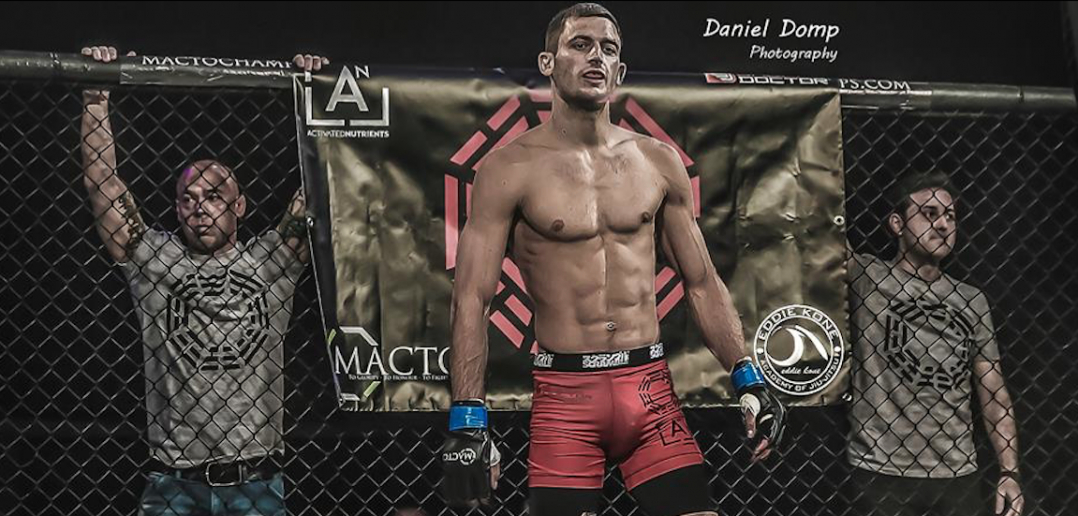
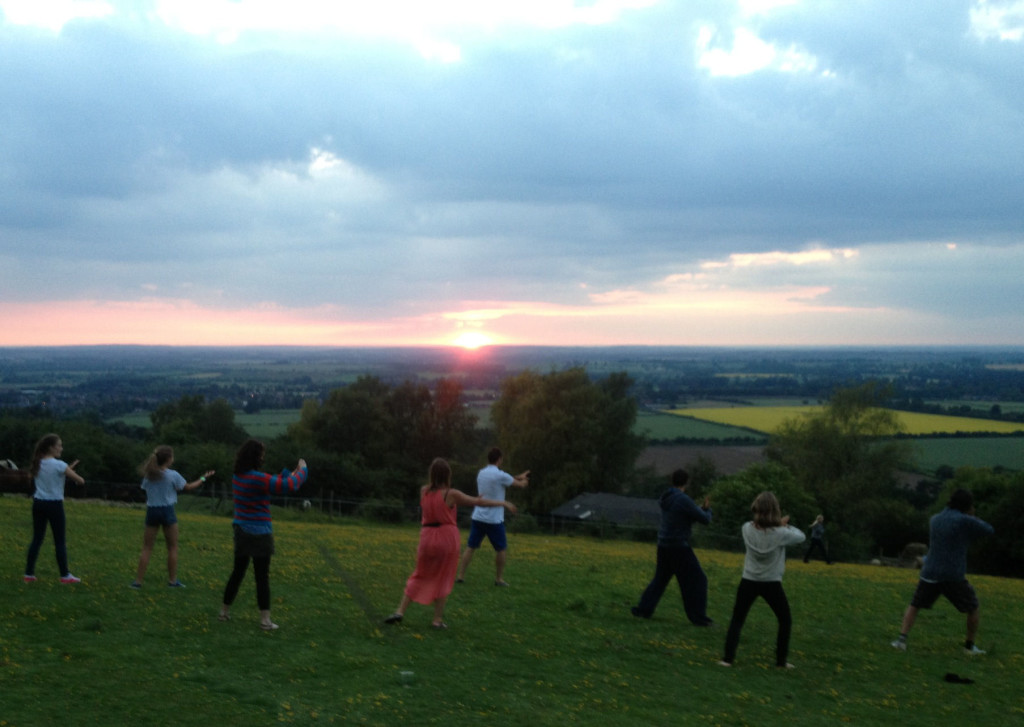
 Taichi principles in training and life
Taichi principles in training and life